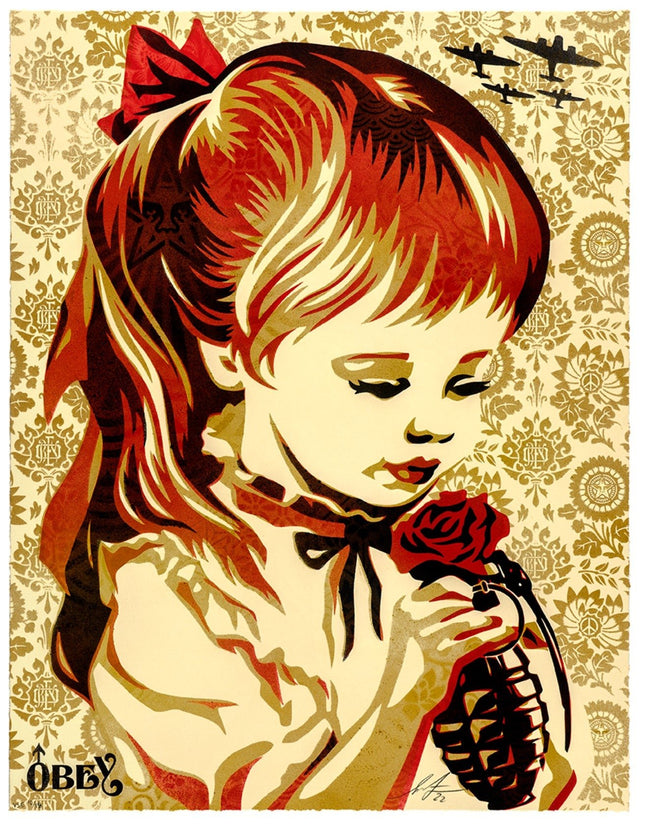
Weapon

Shepard Fairey- OBEY War By Numbers VSE OG Colorway HPM Stencil Shepard Fairey x Ernesto Yerena Montejano x Hecho Con Ganas x Obey
War By Numbers VSE- OG Colorway Variable Stencil Edition Acrylic Artwork on Hand Deckled Fine Art Paper by Street Artists Shepard Fairey x Ernesto Yerena Montejano x Hecho Con Ganas x Obey. 2022 War By Numbers VSE- OG Colorway 20x26.5 inches. Signed & Numbered Ultra Rare Edition of 14. Variable Stencil Edition (VSE) on Paper. Signed by Shepard Fairey, Hecho Con Ganas publishing chop in the lower-left corner. "Created during the Iraq war, but the quest for peace requires perpetual vigilance, and the current invasion of Ukraine is a reminder of the brutality of war. The “War By Numbers” image is a statement about not becoming desensitized by war to the extent that it becomes as banal as a paint-by-numbers image. The “Peace Elephant” is an appeal to our sense of Karma and harmony with the world around us." - Shepard Fairey A profound intersection of artistry and activism emerges in "War By Numbers VSE- OG Colorway," an emblematic piece presented by the collaborative brilliance of Shepard Fairey, Ernesto Yerena Montejano, Hecho Con Ganas, and Obey. Showcased on meticulously hand-deckled fine art paper, this 20x26.5 inch artwork not only exemplifies the prowess of its creators but also delves deeply into the social and political fabric of contemporary global scenarios. Dated 2022, this piece holds the distinction of being an ultra-rare Variable Stencil Edition (VSE) on paper, with only 14 such editions in existence, each one thoughtfully signed and numbered. Notably, the presence of the Hecho Con Ganas publishing chop in the lower-left corner augments its authenticity and intrinsic value. While the artwork itself is a marvel of color interplay and design, its underlying message is both timeless and urgent. Shepard Fairey's own words elucidate the motivation behind its creation, highlighting its inception during the Iraq war. Yet, its resonance extends beyond that particular conflict. The piece emerges as an enduring reminder of the costs of warfare, particularly with the poignant backdrop of the recent Ukraine invasion. Fairey astutely draws attention to the dangers of becoming inured to the horrors of conflict, suggesting that society must never allow war's devastation to become as commonplace and mundane as a paint-by-numbers image. This sentiment is further emphasized by the inclusion of the "Peace Elephant," symbolizing the universal aspiration for harmony and an appeal to humanity's collective conscience. In the vast realm of pop art, street art, and graffiti, "War By Numbers" stands as a testament to art's ability to transcend aesthetic appeal, challenging viewers to confront and engage with the world's most pressing issues.
$8,331.00


